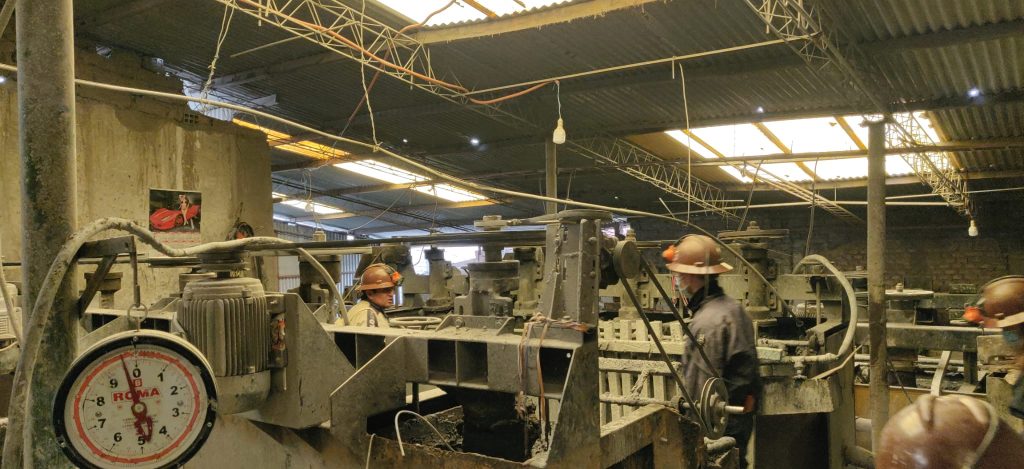Bolivia has 37 official languages and has an indigenous population making up more than 60% of its population. From the moment we crossed the border at Villazon, it was clear that Bolivia was a very different place to Argentina, or any other place we had been on our trip thus far.
Our time in Villazon was spent crossing over from La Quiaca in Argentina for the day, as we awaited a document we required for our vehicle to also cross over. While there, we enjoyed the bustling street vendors selling anything and everything you could possibly want. We had the great pleasure of assistance from a local Bolivian couple regarding receipt of our document. While meeting them we learned a huge amount about Bolivian culture, their relentless work ethic and their challenging relationship with their national neighbours.
Heading north from Villazon we were worried about the quality of the roads. We need not have been. Almost without exception, we enjoyed very good roads all the way through the country. The government have made big investments in infrastructure in recent years and we were certainly grateful for this.
Uyuni and the Salt Flats was our first stop. Having read, heard and seen so much about these over the years, we were very keen to visit. First impressions of the town itself were not particularly appealing. Rubbish piled up on most of the streets and buildings remained unfinished or abandoned throughout. Strange for a city that gets such an influx tourist income each day.
Having slept at the abandoned train cemetery, a very enjoyable experience I must admit, we started a day tour to the Salt Flats. There are literally hundreds of tour operators offering 1, 2, 3 or 4 day+ tours visiting the area. We followed a recommendation of some fellow Overlander travellers and went with a local family-run company. We were delighted with the choice and would recommend this approach wherever possible, as the level of information, service and care will almost always be better.
The Salt Flats should be seen to be believed. Viewing other peoples photos really does not do the place justice. Our guide had the good sense to follow an alternative route to the dozens of other tours there for the day. This afforded us a unique experience and avoided that dreaded feeling of simply following the masses to the same sights and sounds.
After departing Uyuni, a long drive took us to the bustling city of Potosi, jam-packed with history, noise and still some valuable minerals. After some challenges, we eventually arrived to our central location for a few days of exploring. The city itself would not be described by many as obviously appealing, but for us it certainly had its charm. Many of the locals live a hard life from what we could see, either selling on the streets long into the freezing nights, or working in the mines under extremely challenging conditions. Despite this, everywhere we went we were met with smiles and welcoming words, something we always appreciated.
In terms of sights, we visited La Casa de la Moneda, or “House of the Coins”. This is where the Spanish famously minted the silver they had extracted from the mines in Potosi during colonisation. We learned about the monumental quantities produced here over the years and the suffering that the process brought to the local community. We also visited one of the active mines on the outskirts of the city. While very interesting and informative, it was hard to see these young adults putting themselves in such danger for such small rewards. Aside from this, our time in Potosi was generally spent strolling the hectic streets and searching out decent places to eat.
Sucre was our last stop in the south of Bolivia. Arriving there immediately felt different to the Bolivia we had seen so far. There was a distinctively European feel about the place. Buildings were not just fully built and painted (something lacking so far in the country), they were also very attractive and inviting to see and visit. The people were also different, much less indigenous in appearance and actions. While still busy, the streets were less chaotic that the urban areas we had been to.
After visiting some of the sights in the centre of town, we walked to a traditional dance show in the evening. I would not be one to usually go out of my way for such an event, but we had spoken to a few people who highly recommended the experience. They were not wrong. We really enjoyed the show, with its absorbing music, dance and colour throughout. Our kids were captivated for the full 2.5+ hours, which says something!
Our few days in Sucre also coincided with the South American Junior Olympics. This afforded us the opportunity to see budding athletes perform at very high levels in some of the cities sporting locations. Being a sports mad family, this was very well received! We also managed to spend an afternoon in the Simon Bolivar Park in the city. This is a very impressive place to spend some time, with kids activities all around and street food to fill any empty stomachs.
Reaching our self-prescribed “half-way” point in Bolivia really brought home to us the differences and disparities that exist within the country. Yet each place we had visited had been enjoyable in its own way and the people we had met had made us feel like they were truly glad for us to be there. We thus looked forward to our second-half in Bolivia with much excitement…



experience







